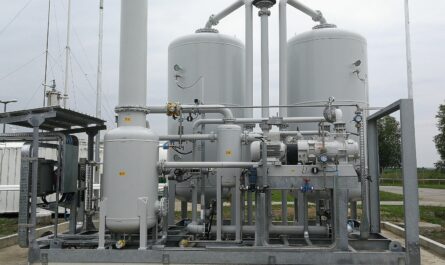Offshore wind energy holds tremendous promise to provide clean, renewable power on a large scale. As concerns about climate change increase and renewable energy goals are set higher, offshore wind farms are emerging as an important part of the solution. There is massive untapped potential for offshore wind in waters around the world. Tapping into this resource could go a long way in reducing carbon emissions while creating new jobs and economic opportunities.
The Growing Role of Offshore Wind
Offshore wind farms are now a proven technology that is growing rapidly across Europe and starting to take hold in other parts of the world. Several countries in northern Europe like the UK, Germany, Denmark and the Netherlands have been early leaders in developing offshore wind. More than 22,000 megawatts (MW) of offshore wind capacity has been installed in Europe so far, with thousands more MW under construction or in development stages.
Countries are setting even more ambitious offshore wind targets going forward. The UK government recently increased its offshore wind target to 40 gigawatts (GW) by 2030. Germany aims to have over 20 GW of offshore wind capacity by 2030. China also has major offshore wind ambitions, with a target of over 30 GW by 2030. As costs continue falling, driven by technology improvements and economies of scale, offshore wind is becoming an increasingly viable Clean Energy option for more countries around the world.
Massive Potential for Offshore Wind in the US
The US has been lagging in offshore wind development compared to Europe, but that is starting to change. States on the East Coast and West Coast hold huge potential for offshore wind farms that could power millions of homes. The US Department of Energy estimates the total offshore wind technical potential around the country is over 2,000 GW – more than twice the nation’s total current electricity generation capacity.
A number of large-scale projects are in the works that could help the US tap into this massive renewable resource. Virginia is aiming to install at least 2.5 GW of offshore wind by 2026. New York has set a target of 9 GW by 2035. Massachusetts is moving forward with an 800 MW project, and Rhode Island could see a 400 MW offshore wind farm. More states on both coasts are in the planning stages of offshore wind projects that could eventually grow to tens of gigawatts of generation capacity.
Challenges and Solutions for Offshore Wind Development
While offshore wind represents a huge opportunity, there are also technical challenges that need to be overcome, especially for building projects far out at sea. Deep water conditions require innovative foundation designs such as floating platforms that are still being tested and proven at scale. Grid transmission also presents difficulties, as cables must travel long distances from turbines to reach land.
Environmental concerns must also be addressed during the planning, construction and operation of offshore wind farms. Careful siting is needed to avoid impacts on bird migrations, shipping lanes and other ocean uses. Noise pollution during construction requires mitigation measures. Debris from aging turbines will eventually need collection and disposal plans.
Through continued innovation and smart regulation, these challenges can be managed sustainably. New turbine and foundation designs are unlocking deeper waters further from shore. Undersea transmission cable and converter station technologies are improving. Environmental monitoring during projects helps address wildlife concerns. Offshore wind also creates many new high-paying jobs for marine engineers, electricians, manufacturing and more. With political will and coordinated action on multiple fronts, the offshore wind industry can be built out responsibly.
Offshore Wind Powers the Blue Economy
The expansion of offshore wind has significant potential to boost associated maritime industries and coastal economic development. From turbine manufacturing to installation, operations and maintenance, the offshore wind sector supports a growing number of “blue economy” jobs. Port upgrades are underway in several US states to accommodate larger wind turbine components and installation vessels. New duty cycle and crew transfer vessels are needed. Specialized service operations vessels provide maintenance.
As supply chains develop and offshore wind farm clusters emerge in strategic offshore zones, manufacturing, logistics and engineering hubs could spring up or expand near major port cities. Workforce training centers work to prepare the next generation of offshore wind technicians and marine trades workers. All of these activities help revitalize coastal industrial areas and rural economies in regions aiming to transition away from fossil fuels. The opportunities enabled by offshore wind investment ripple out through surrounding communities as well.
*Note:
- Source: Coherent Market Insights, Public sources, Desk research
- We have leveraged AI tools to mine information and compile it




